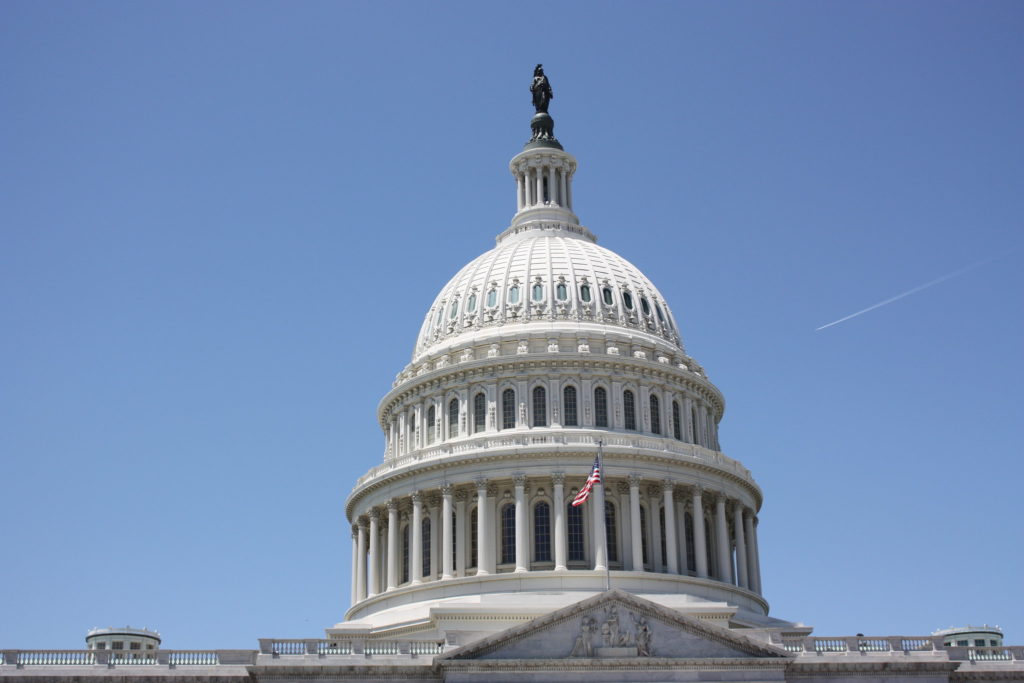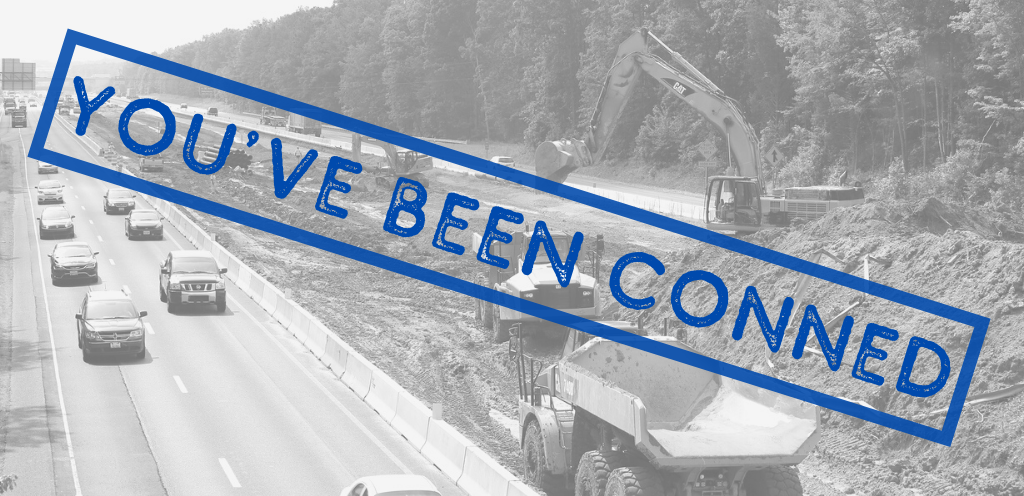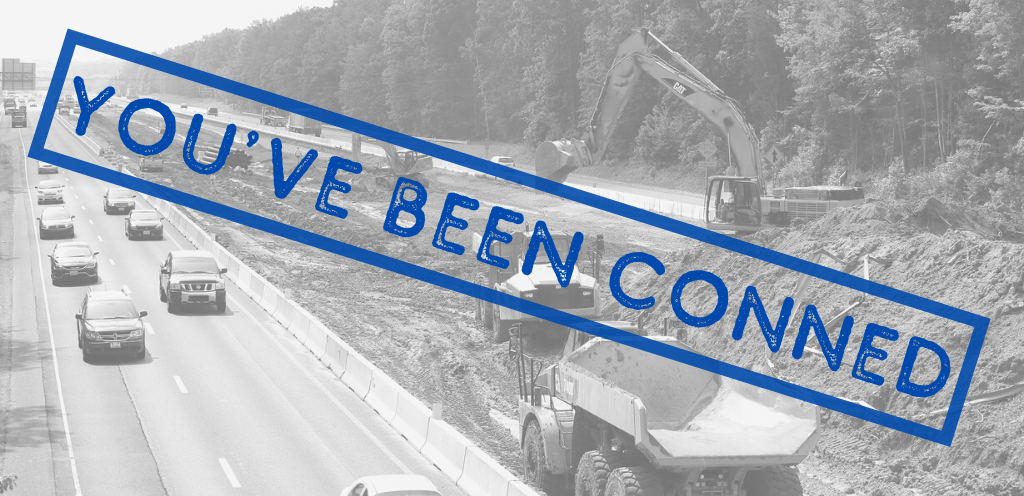
Dear governor, our congestion “solutions” have failed

Governors and legislators in state houses across the country have a major role to play in ending the congestion con and spending our money on projects that will actually improve our lives—rather than just temporarily shortening some commutes by 30 seconds until the congestion returns. Help us make that a reality by sending your local officials a message.

In the United States, conventional wisdom holds that the solution to traffic congestion is more and wider roads. But the conventional wisdom is wrong. Really wrong.
It’s been well documented for years that wider roads create more traffic rather than reduce it. Research showing this dates back to the 1960s and Transportation for America’s new report—The Congestion Con—shows clearly that on average congestion has more than doubled in the 100 most populous urbanized areas since 1993, despite billions spent on freeway expansions.
Unfortunately, the state officials in charge of directing how we spend transportation dollars haven’t gotten this memo and keep advocating for more roads as a solution to congestion.
It’s time to end the con. Send a message to your state legislators and governor to make sure they have this new data.
There are dozens of prominent examples around the country that demonstrate just how futile highway widenings are, like the Katy Freeway widening in Houston, TX or the I-405 widening in Los Angeles. Both epitomize induced demand, where new lanes just entice more people to drive. More insidiously, new freeways also spur sprawl by making previously remote land more readily accessible.
Governors are sometimes the worst offenders here. Many have grand—i.e. expensive—highway plans to “solve congestion” and they appoint transportation secretaries that will make their pet projects a reality. In many cases, governors see their department of transportation (DOT) not as a holistic transportation department, but as a highway department. DOTs could just as easily be put to work eliminating our road maintenance backlog or building robust networks of biking, walking, and transit infrastructure that would reduce traffic burdens instead of digging us into a deeper congestion hole.
But governors are absolutely not the only ones to blame here: state legislatures can and do set limits for or give directives to DOTs through legislation and oversight. Legislators are often just as complicit in the congestion con, whether they know it or not.
Take action and make sure elected leaders in your state have the information they need to make informed transportation investments.
Real solutions for real relief
It’s time to break this vicious cycle. Instead of spending huge sums of public money on ineffective highway widenings, let’s instead focus on real solutions that can deliver real congestion relief.
The Congestion Con report details five policy recommendations. While many are targeted at the federal government—and would be most effective if implemented nationally—states can and should move forward with these policy changes on their own. In fact, state action almost always precedes major federal policy shifts and states should lead by example.
First, we need a new measure. Using vehicle delay as a proxy for congestion is 1) overly simplistic, 2) car-centric and ignores everyone else not in a personal vehicle, and 3) leads to an expensive focus on spot improvements instead of system-wide solutions. With new technologies that are readily available, DOTs could instead start measuring accessibility—what jobs and services can one easily reach and how. An accessibility measure is much more robust, includes all travel modes—walking, biking, transit, driving—and allows us to more accurately evaluate other important information like trip times, trip lengths, overall travel, mode split, emissions, health impacts, and household transportation expenditures. Some states like Virginia and Hawaii are already using access to prioritize projects for funding and more states should follow their lead.
Second, states should focus on road repair instead of road expansion. As we chronicled in Repair Priorities 2019, states choose to spend about as much money on repairing existing highways as they do building new ones—and the maintenance backlog continues to grow as a result. There is nothing preventing state legislators from directing their state DOT to prioritize repair with highway funding until and unless a certain (high) threshold of roads are in good condition. The federal government has given state DOTs tremendous flexibility to choose how to spend billions in annual highway funds, but in the absence of directives to spend on repair, many shirk that responsibility. The only thing preventing us from reducing our maintenance backlog is the will to act.
Third, we need safer streets for everyone. When streets are designed to prioritize high-speed cars and trucks, it robs people of the ability to walk or bike to their destination, even if it’s nearby. While Congress has a role to play here with the federal Complete Street Act, state legislatures could just as easily dictate that roads surrounded by development be designed for speeds of 35 mph or less.
Fourth, we need to address demand by pricing roads. We will never be able to build enough supply—we have to find ways to reduce travel demand at peak times. The meat of this recommendation is federal: remove restrictions on tolling federal highways and allow the proceeds to be used for other roads, transit, and walking & biking infrastructure. This national restriction on tolling is related to the current hold up on New York City’s congestion pricing plans. But if other states were to pursue congestion pricing in their metro areas as a way to raise more funding to invest in other transportation options, this would put more pressure on the Federal Highway Administration and Congress to change the law.
Finally, we need to curtail sprawl and focus on infill development. A major part of the congestion con is this negative feedback loop: new highway → new development → more traffic → wider highway → more sprawling development → more traffic ad infinitum. On this issue, states can truly lead the way. In Oregon, Virginia, Maryland, Minnesota, Nebraska, and other states around the country, legislators are considering or have passed state level bills to remove overly restrictive zoning rules that raise the cost of housing in existing communities and make it easier to build new homes that are closer to jobs, schools, and other destinations. This reduces the pressure to build new roads out to the fringe to support new homes in sprawling locations
Governors and legislators in state houses across the country have a major role to play in ending the congestion con and spending our money on projects that will actually improve our lives—rather than just temporarily shortening some commutes by 30 seconds until the congestion returns. Help us make that a reality by sending your local officials a message.



